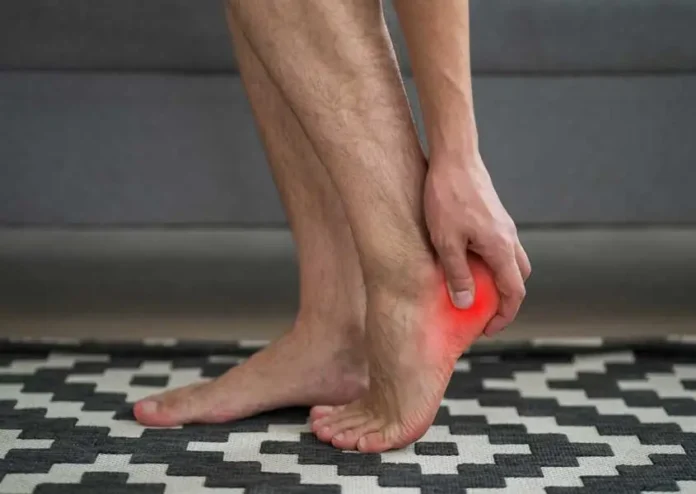Heel pain is often caused by plantar fasciitis, a condition characterized by inflammation of the plantar fascia, the tissue that runs from your heel to your toes. When this tissue is strained, small tears can develop, leading to inflammation and heel pain, especially where it attaches to the heel bone. Learning about this condition will help you recognize its symptoms and seek appropriate care.
Plantar Fasciitis
Plantar fasciitis is a common foot condition that occurs when the plantar fascia, a thick band of tissue running along the bottom of your foot from the heel to the toes, becomes inflamed or irritated. It is often characterized by sharp, stabbing heel pain, especially during the first steps in the morning or after periods of rest. The discomfort may lessen with movement but can return after long periods of standing or when getting up after sitting. In some cases, the pain extends along the arch of the foot, making it feel like stepping on a stone or experiencing a deep ache.
Risk Factors
Several factors are known to increase your risk of developing heel pain from plantar fasciitis. Age is a key factor. The condition is most common in people aged 40 to 60. Certain activities, like long-distance running, ballet, or aerobic dance, put stress on the heel and its connective tissue. Foot mechanics, such as flat feet, high arches, or an irregular walking pattern, can also strain the plantar fascia.
Other factors include weight and occupation. Obesity adds extra pressure on the plantar fascia, increasing the risk of injury. Jobs that require long hours of standing on hard surfaces, such as factory work or teaching, can also damage the plantar fascia over time. Together, these factors lead to the overuse and strain that cause plantar fasciitis.
Managing Pain
Rest helps manage heel pain. Limiting activities that aggravate the pain can help prevent further irritation of the plantar fascia. Incorporating short periods of rest into your routine can help facilitate the healing process and alleviate discomfort over time.
Applying ice to the painful area for 15-20 minutes, several times a day, helps provide relief. Ice helps reduce inflammation and numbs the pain, making it easier to manage symptoms. Consistency is key for this method to work effectively.
Gentle stretching exercises can improve flexibility and ease tension in the calf muscles and plantar fascia. Try pulling your toes back toward your shin while keeping your leg straight or rolling your foot over a tennis ball. Supportive footwear with proper arch support and cushioning help reduce strain, especially when avoiding walking barefoot on hard surfaces.
Professional Treatment
Healthcare providers may recommend various treatment approaches based on your specific situation. Physical therapy can help you learn proper stretching and strengthening exercises to improve your overall well-being. Custom orthotic devices may provide additional support and help distribute pressure more evenly across your foot.
In some cases, healthcare providers might suggest night splints to maintain a gentle stretch of the plantar fascia while you sleep. Other treatments may include specific medications or procedures, depending on the severity and persistence of your symptoms. Physical therapy exercises may also be recommended to strengthen the affected area and improve flexibility.
Take Control of Heel Pain
Heel pain from plantar fasciitis can affect your daily life. Learning about the condition is key to finding relief. If the pain persists or worsens, consult a healthcare provider for evaluation and treatment options. Early intervention and proper care often lead to significant improvement in symptoms.

